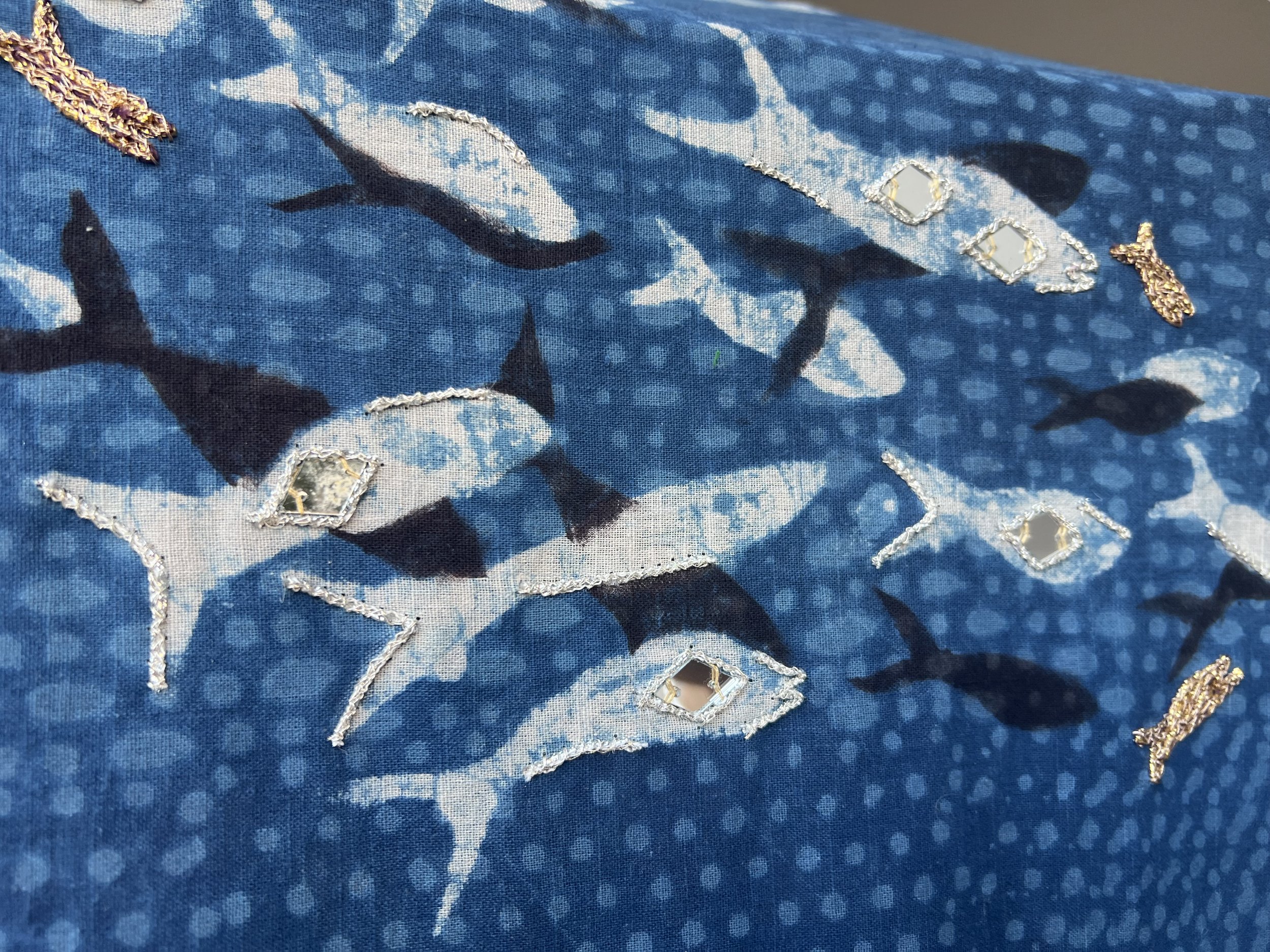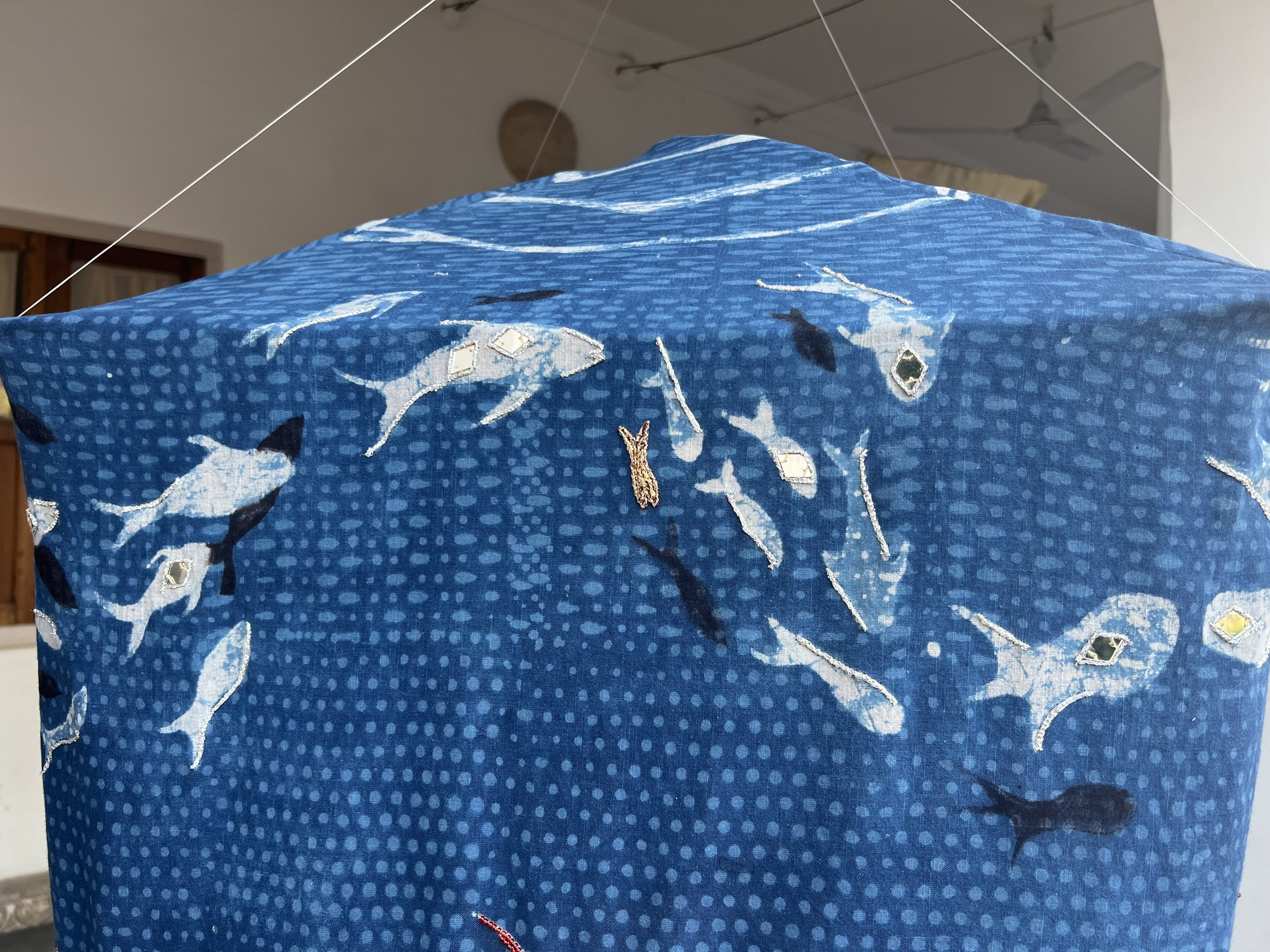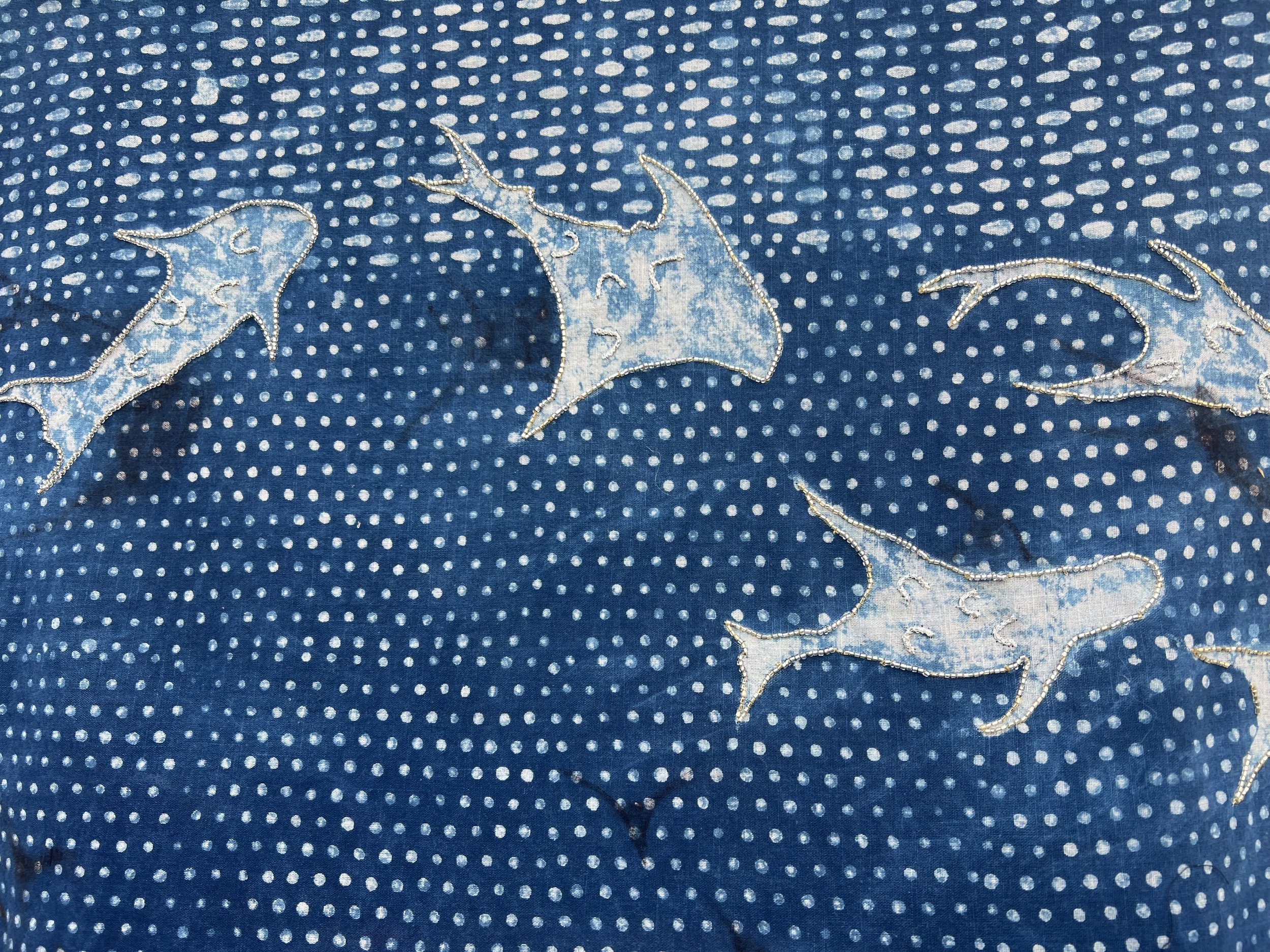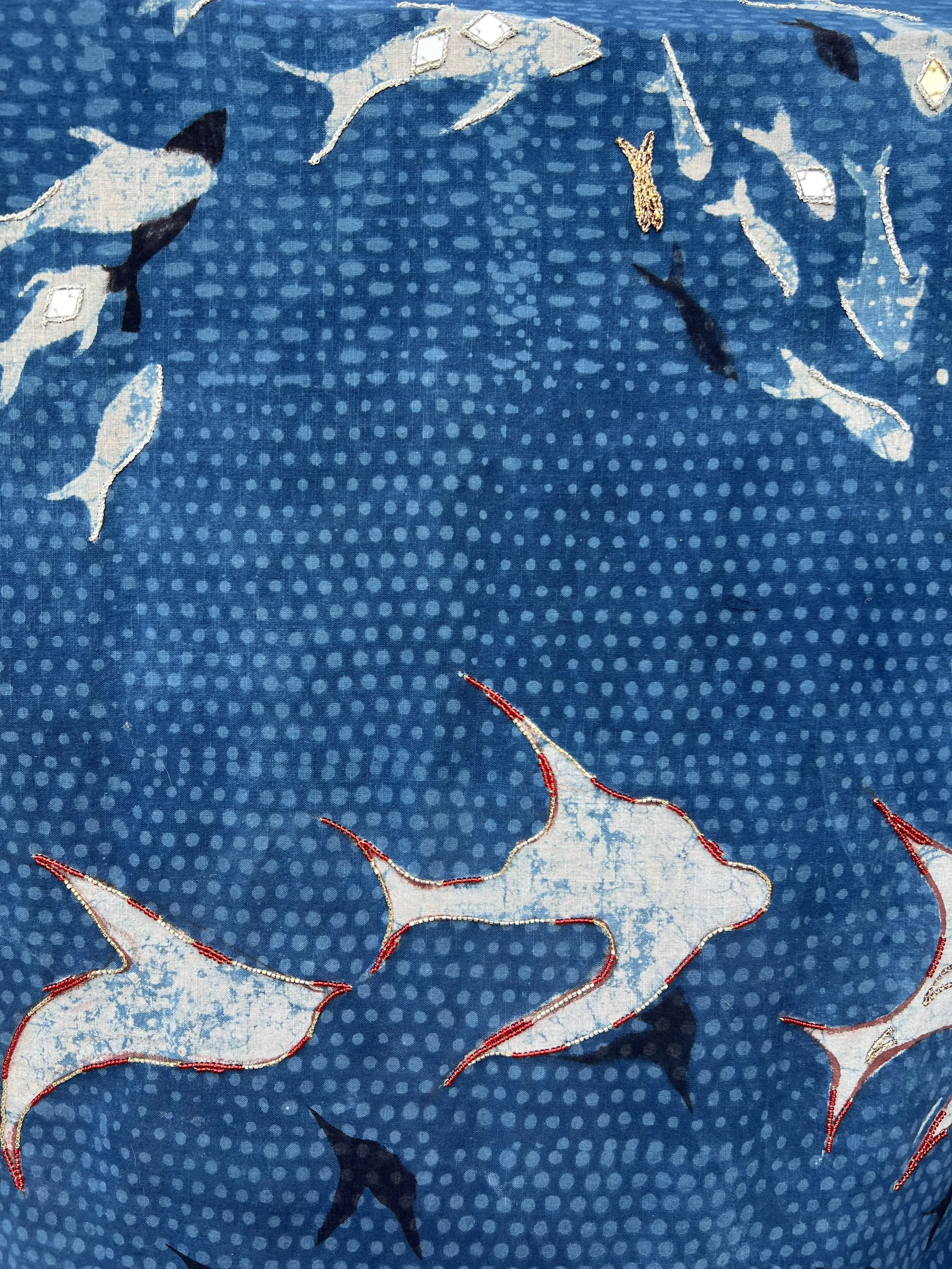“When Fish Learn To Fly”, 2025
This past January 2025 I had the opportunity to participate in a month long study abroad program in Jaipur, India. Though I learned about many different types of textile practices and histories of craft in Jaipur, I spent the most time with Bagru, a traditional hand block printing technique. Working alongside artisan Amit Derawala, who specializes in Bagru and runs a studio practice with his family, I was able to print and dye a fabric cover for a soft sculpture that I intend to install as a lamp. During my time in India, I was constantly surrounded by birds and fish: birds in huge flocks in the sky like I had never seen before, and fish as symbols of courage in art and jewelry of museums and landmarks alike. Considering the relationship between fish and bird, myself and traditional textile practices, I wanted to create a piece about transition as fish forms become feathered.
The base textile is a cotton slub fabric. The black and red elements are hand painted with Begar (red) and Shyahi (black) natural dyes. After this process was completed, I then Dabu (mud) resisted all fish and bird motifs and indigo dyed the fabric. Following the first dip, I then block printed the background patterns with additional Dabu resist for a second and final indigo dye.
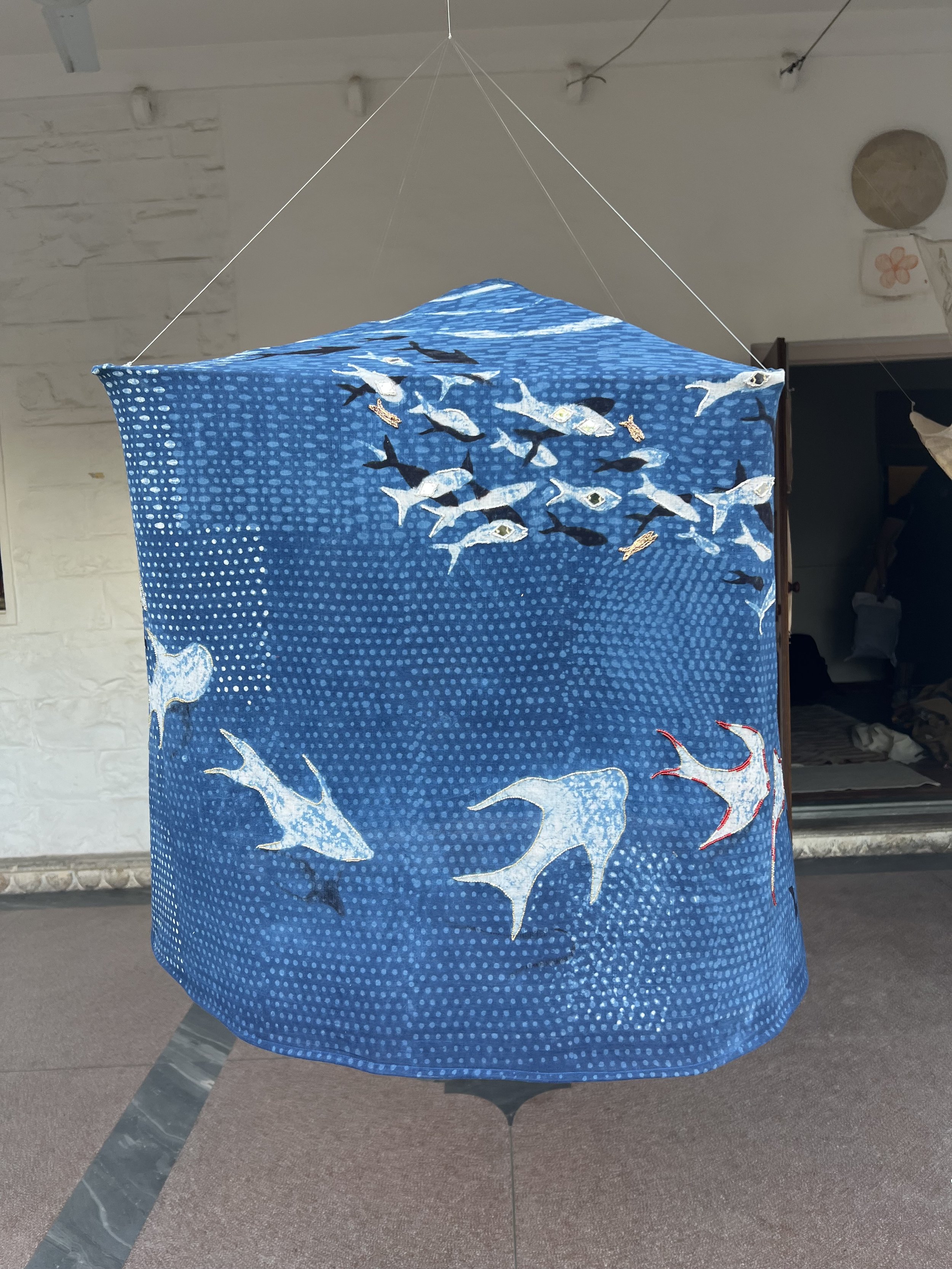
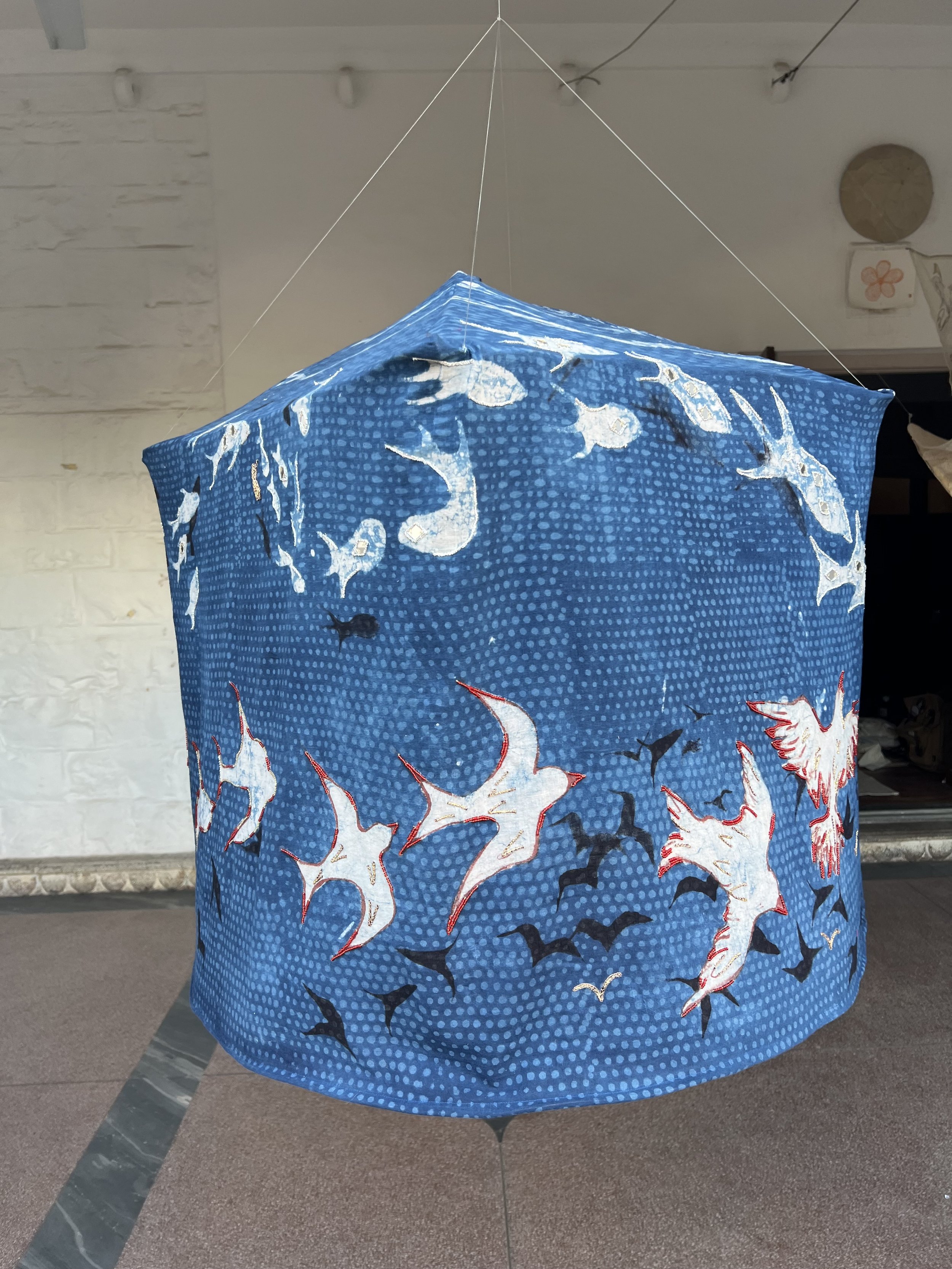
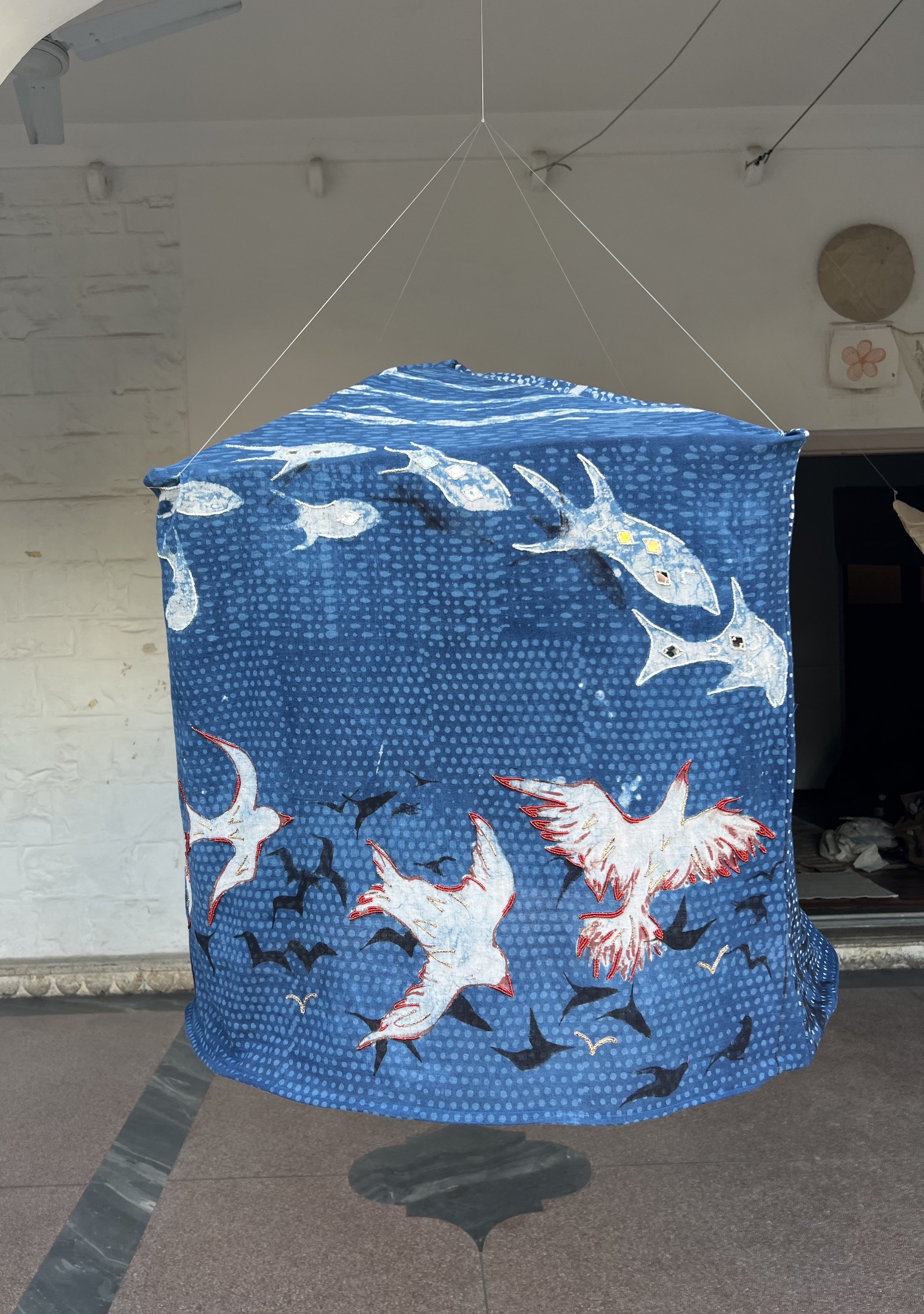
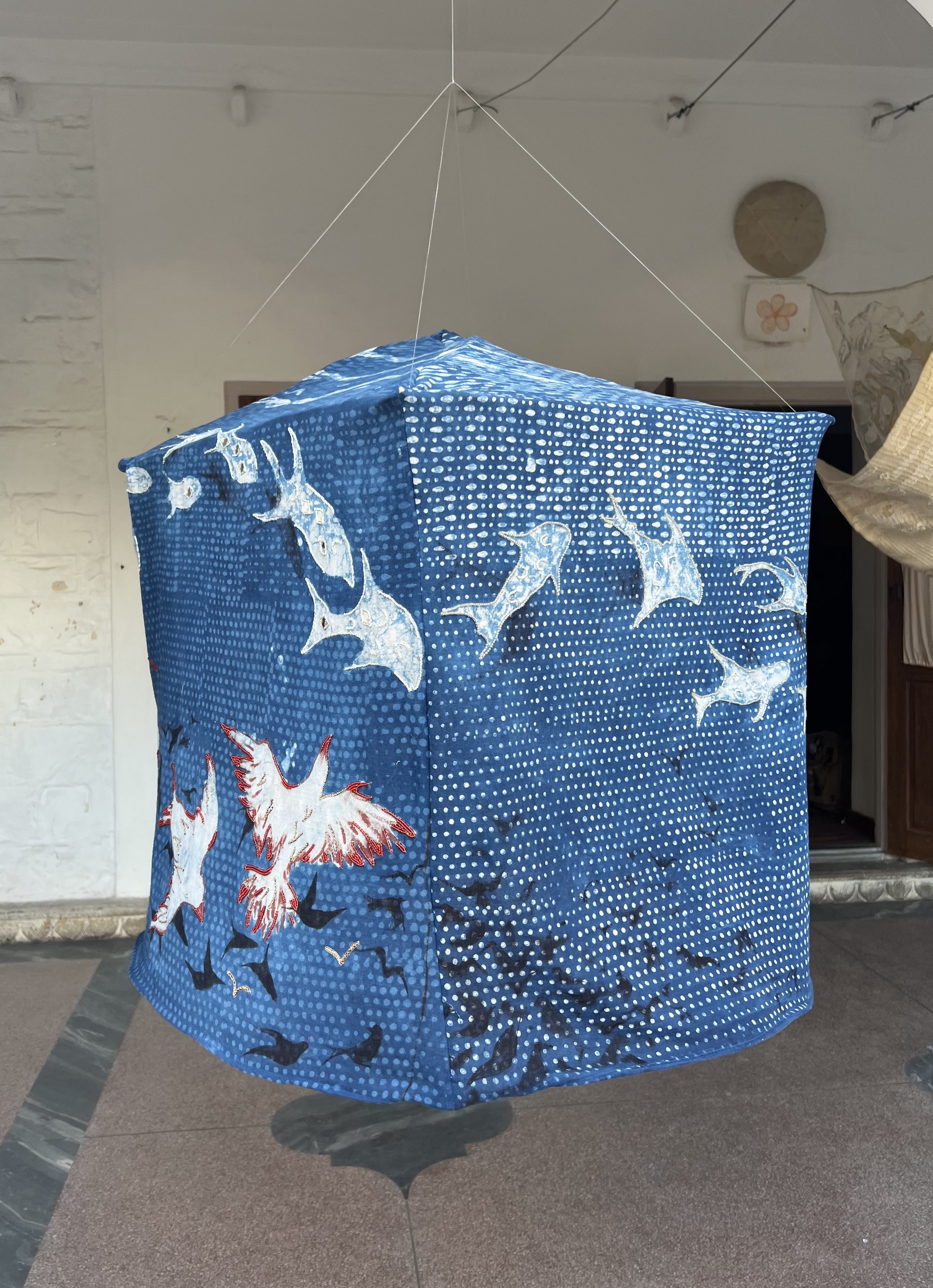
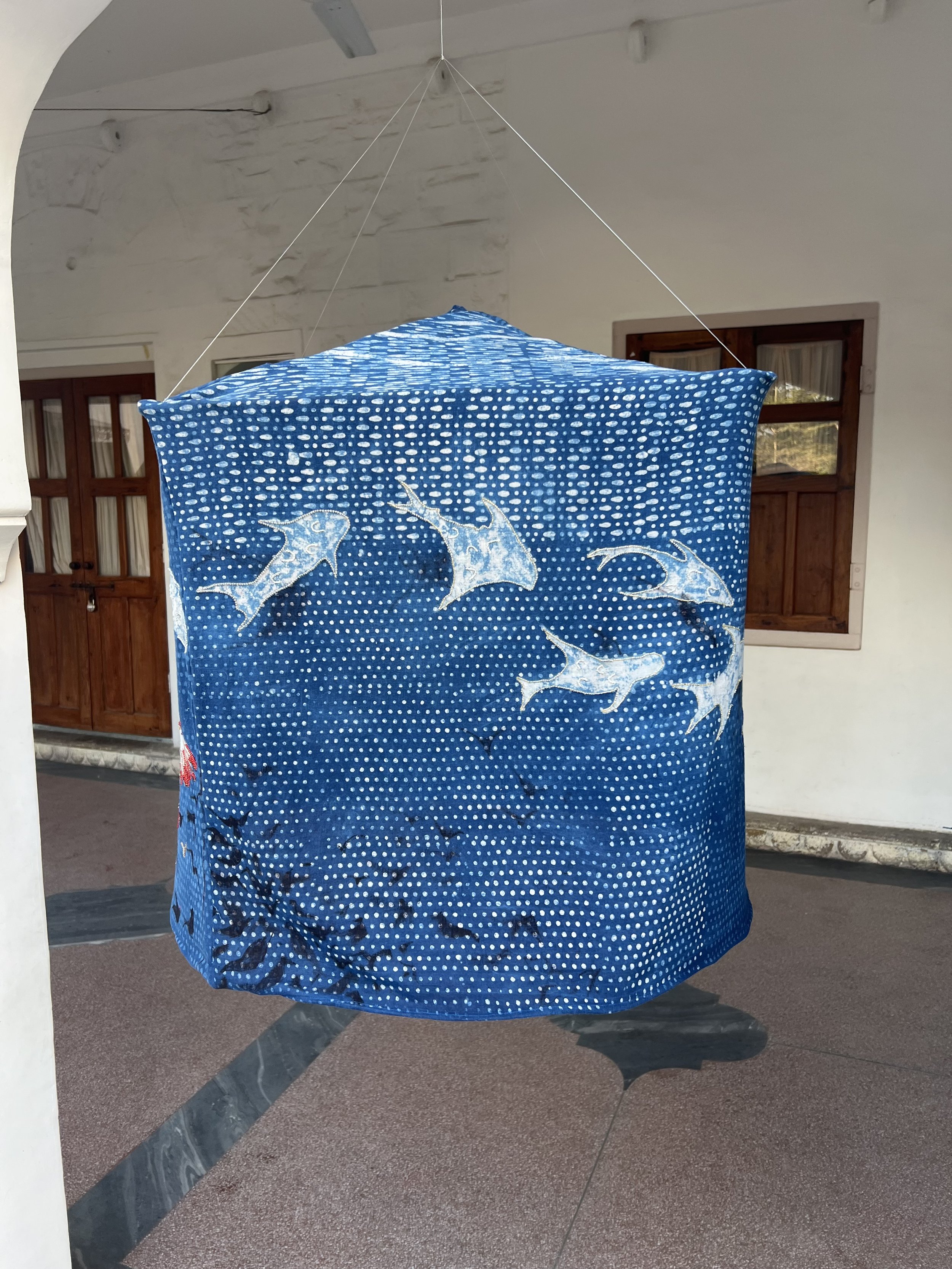
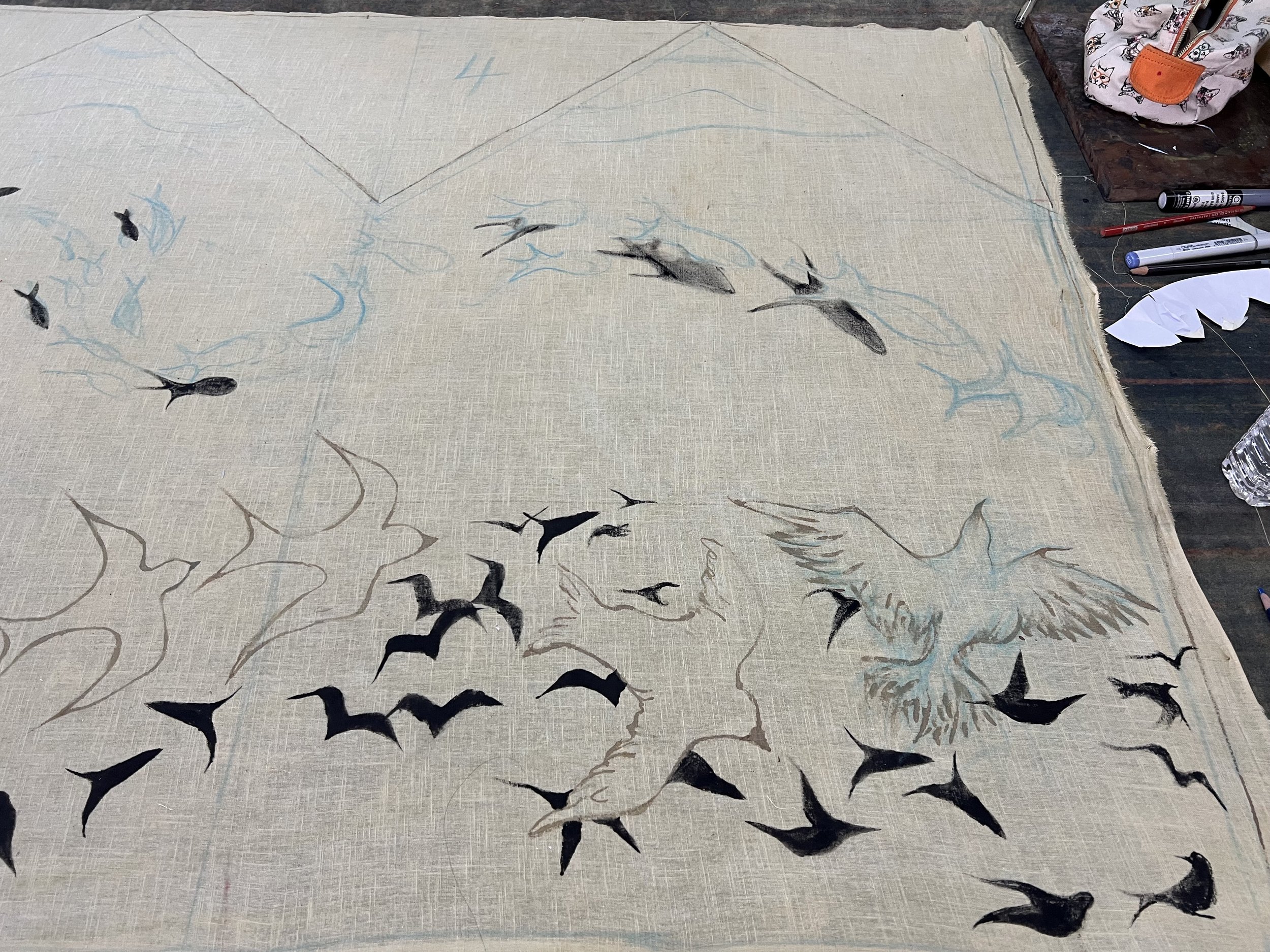
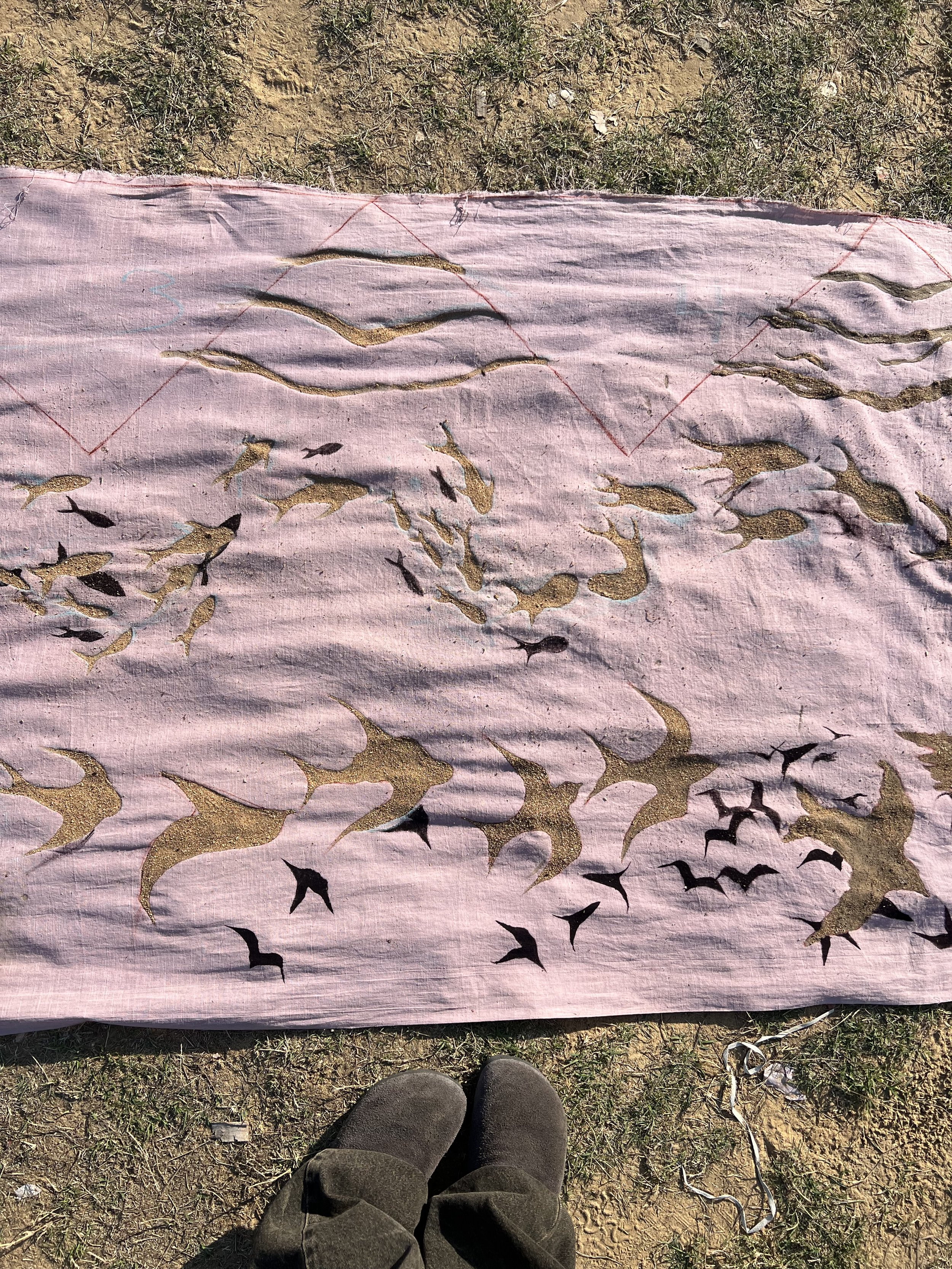


After all Bagru processes, I also had the opportunity to work with local embroidery artisans who specialize in highly elaborate hand embroidery. Though I tried my own hand at embroidery, it was a very difficult and labor intensive skill to learn. Under limited time constraints, all final embroidery work on my piece was designed by me but executed by Sandeep, one of the embroidery artisans. Ultimately, this was a project of intense collaboration at a variety of levels; more interpersonally between myself and artisans like Amit and Sandeep, and more broadly between my own artistic practices and the centuries-old, traditional techniques of embroidery and Bagru. While this work is in some ways my own, it is in many ways also the work of the hands that aided in its very existence — by people from whom these crafts are not just an art form but a lifestyle.
